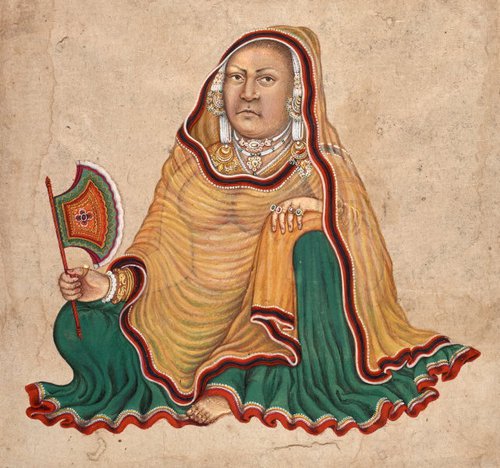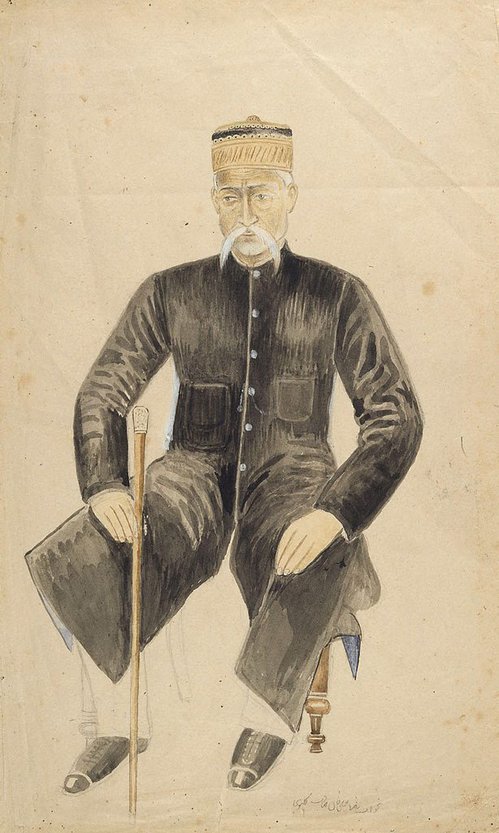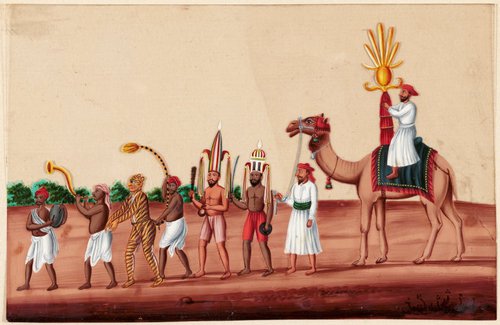-
Details
- Other Title
- Mohurrum procession
- Place where the work was made
-
India
- Date
- circa 1850
- Media category
- Painting
- Materials used
- pigment on mica
- Dimensions
- 15.0 x 19.5 cm; 45.8 x 31.8 cm frame
- Credit
- Gift of Dr Jim Masselos 2022
- Location
- Not on display
- Accession number
- 279.2022
- Copyright
- Artist information
-
Company style
Works in the collection
- Share
-
-
About
The Muharram festival is a celebration that takes place in the first month of the Muslim calendar to mourn the deaths of Ali (the son in law of the Prophet Muhammed) and his two son, Hasan and Hussain. Within the genre of Company paintings, the festival is frequently depicted as a meandering procession of men who move across the plane of the picture from the right to left in a diagonal direction creating a realistic depiction of movement and depth. The textured rendering of the ground creates the sense of an uneven surface beneath the participants feet and the inclusion of a horizon line and shadows adds to the illusionistic qualities of the painting.
At the time of this painting, large ‘tazias’ or floats depicting Al Buraq (the stead of the Prophet Muhammad) and the tombs of Muslim saints were made of bamboo, tinsel and mica, the same material this painting in painted on. Mica is a naturally forming silicate crystal that can be split into very thin sheets. Although difficult to see from a far or online, this material is completely transparent and so what you see as the colour of the sky is in fact just the colour of the paper support behind the painting. Paintings on mica became very popular among British patrons after 1800.
As seen in this painting, the Tazias were carried on two horizontal poles by up to 6 men in the same way that palanquins were used to transport Indian royalty. In the background other men can be seen bearing long flag poles, some that have decorative finials in the form of Ali’s double-bladed sword and the Panja, an open hand representing the five members of the Prophet’s family. The procession, accompanied by drummers and chanting continues over ten days culminating in the immersion of the ‘tazias’ in the seaside, river or other waterway.
-
Places
Where the work was made
India
-
Exhibition history
Shown in 1 exhibition
Intimate Encounters: Indian paintings from Australian collections, Art Gallery of New South Wales, Sydney, 22 Feb 2007–04 May 2007




